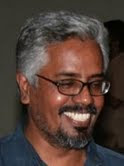WCC - The Cup of Blood and Tears
The Abyss of Hype – Cricket and its Martyrs
With World Cup Cricket, sports seems to be turning into the primal spectacle that it was in the beginning. Here also, you either lose your scalp or win it.
First came the debacle of the Indian team. They were defeated by the young Bangladeshis for a convincing margin. Then came the reports about the murder of Bob Woolmer, coach to the Pakistan team. Both these have sent tremours through the cricketing establishment in the sub continent. For, in the sub continent, cricket is not just another game but a religion that vegetates on the fanatic. And this religion is one which in turn is sponsored and fuelled by the media and the advertisement industry.
These two incidents throw sinister light on the financial and moral economy of the game as it is 'played' at present. According to reports, if Indian team fails to make it to the Super Eight stage, it is going to topple the apple cart. It will affect the revenue – advertisements, television rights etc – to a huge extent. Some predict that it could be as high as 70 per cent of the revenues expected from the tournament. According to industry sources, a ten seconds advertisement on television during a match in which India is participating has been sold for as much as Rs.5 lakhs plus. And for the other games it is around Rs 1.50 lakhs. This has been marketed and sold in the belief that india would play as many games, or all the games at least upto the Super Eight league stage. Ironically, we are witness to a strange situation where the very people who created the hype ending up believing in it themselves! Only the media and the corporates seems to have the stupidity to bank on the talents of the tigers our players have been made out to be! The debacle of Team India at the hands of Bangladesh got all the real players into a panic - the sponsors, media buyers, the ICC, the travel trade, ad agencies, TV channels etc. It is estimated that if India fails to qualify for the Super Eight "it would put into jeopardy about Rs 350 crores worth of television money, roughly $300 million of sponsorship money, and ICC's forthcoming global sponsorship deals, bids for which are currently open at $60 - $80 million per sponsor" (Economic Times, 19 th March 2007).
Obviously, it is not an open, gentleman's game of fair chances any more. It has turned out to be a gambler's den where fortunes are made and ruined. In this frenzy, the first casualty is sense of proportion and priority. Our players, who earn more from advertisements than from the game, are made out to be crusaders, out on the war front to win the scalp for India. Only by creating such a mass frenzy and desire to win the cup can the viewership be maintained. And for that, one needs heroes to sustain the frenzy and the hope. Obviously, the match is played not on the pitch but outside the stadium; it is a game played by sycophants, jingoists, and fanatics on the one side and ad agencies, speculators and corporates on the other. Only casualty is the spirit of the game. This is something that became heartwrenchingly evident in the tragic event of the death of Woolmer at the tournament. If it is an indicator of things to come, the dark side seems to have won over this 'gentleman's game'. Ultimately, the game is finding itself in the morass and abyss of the hype that it has begun to believe in.
Labels: cricket, media hype, world cup cricket





